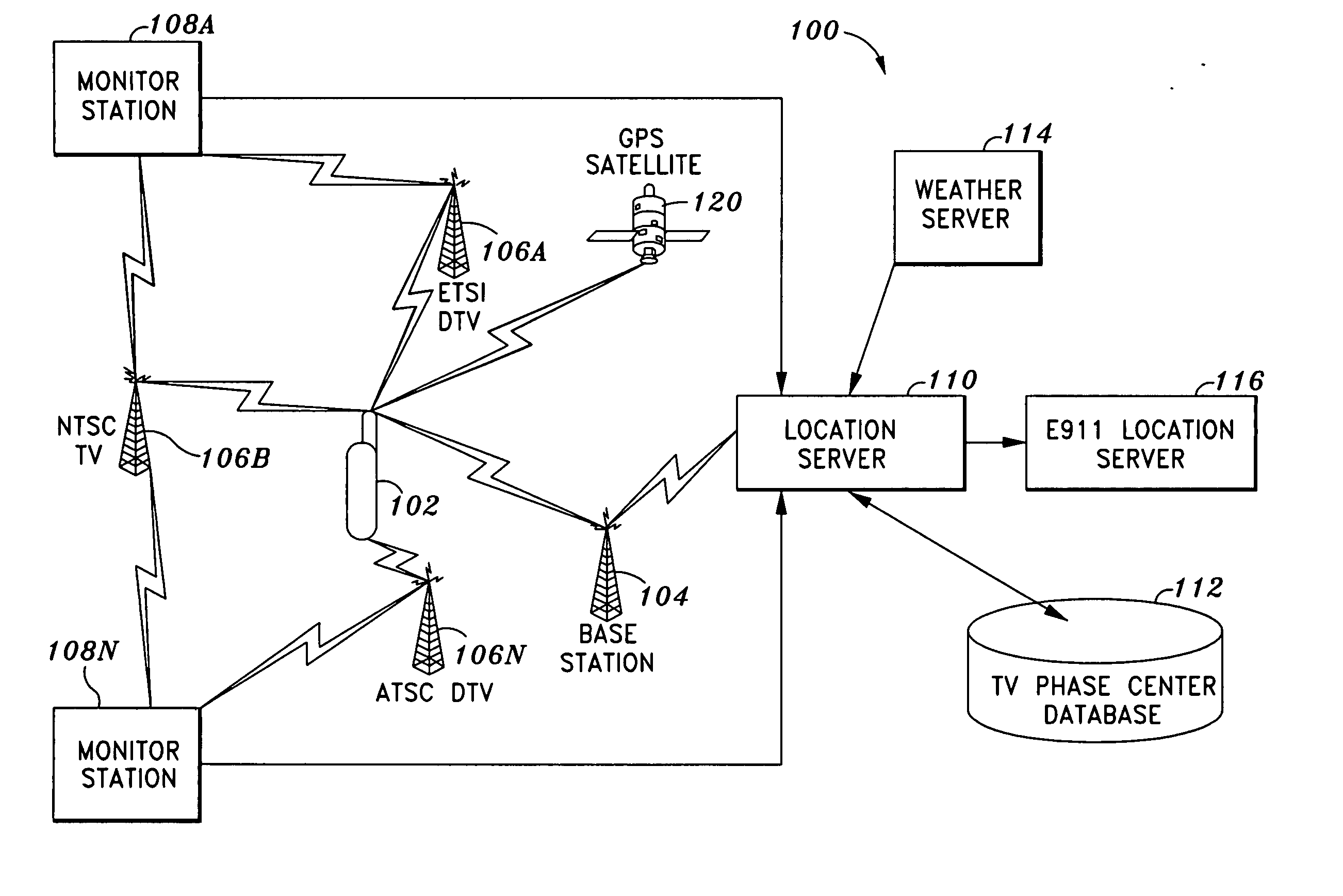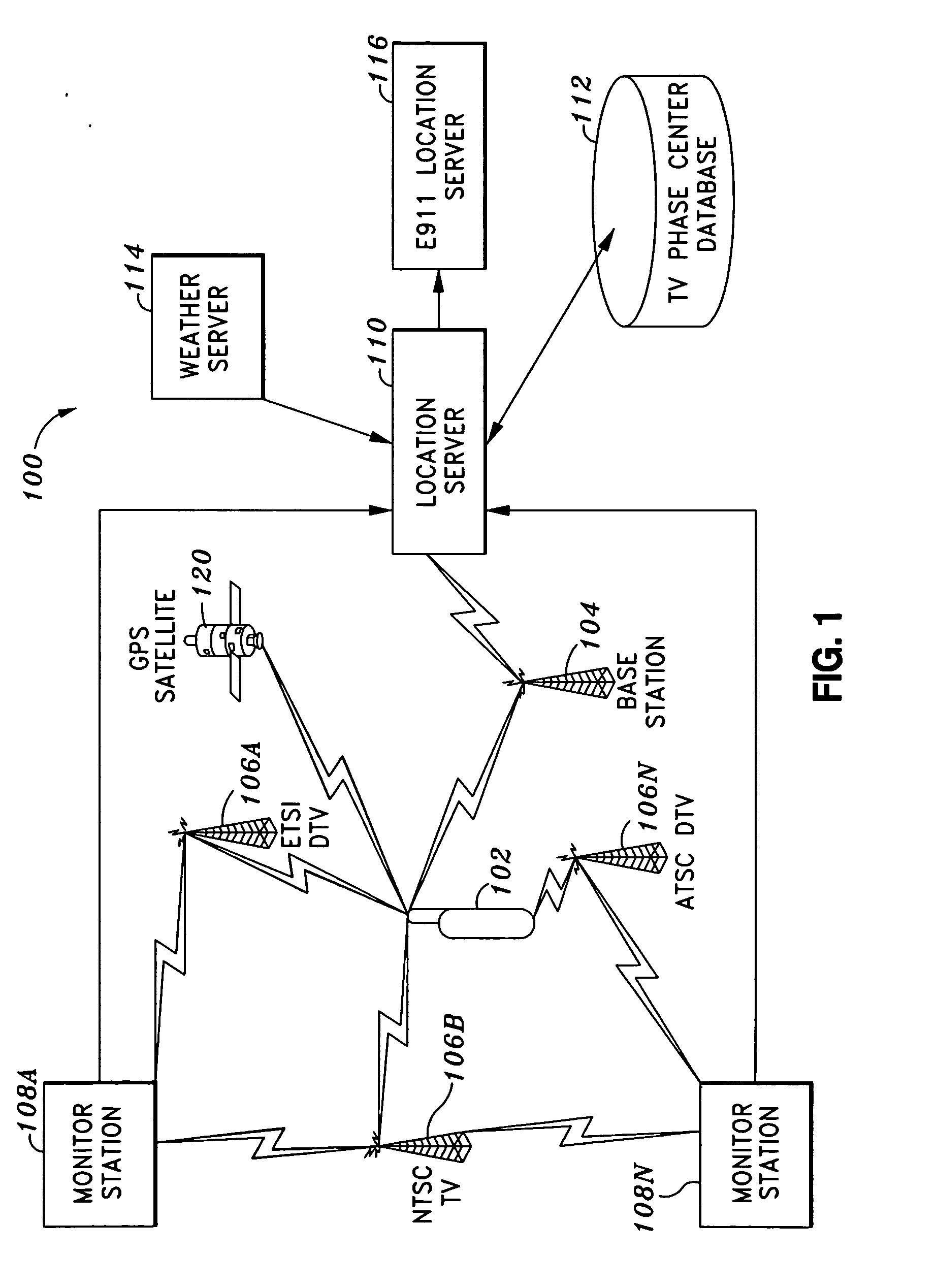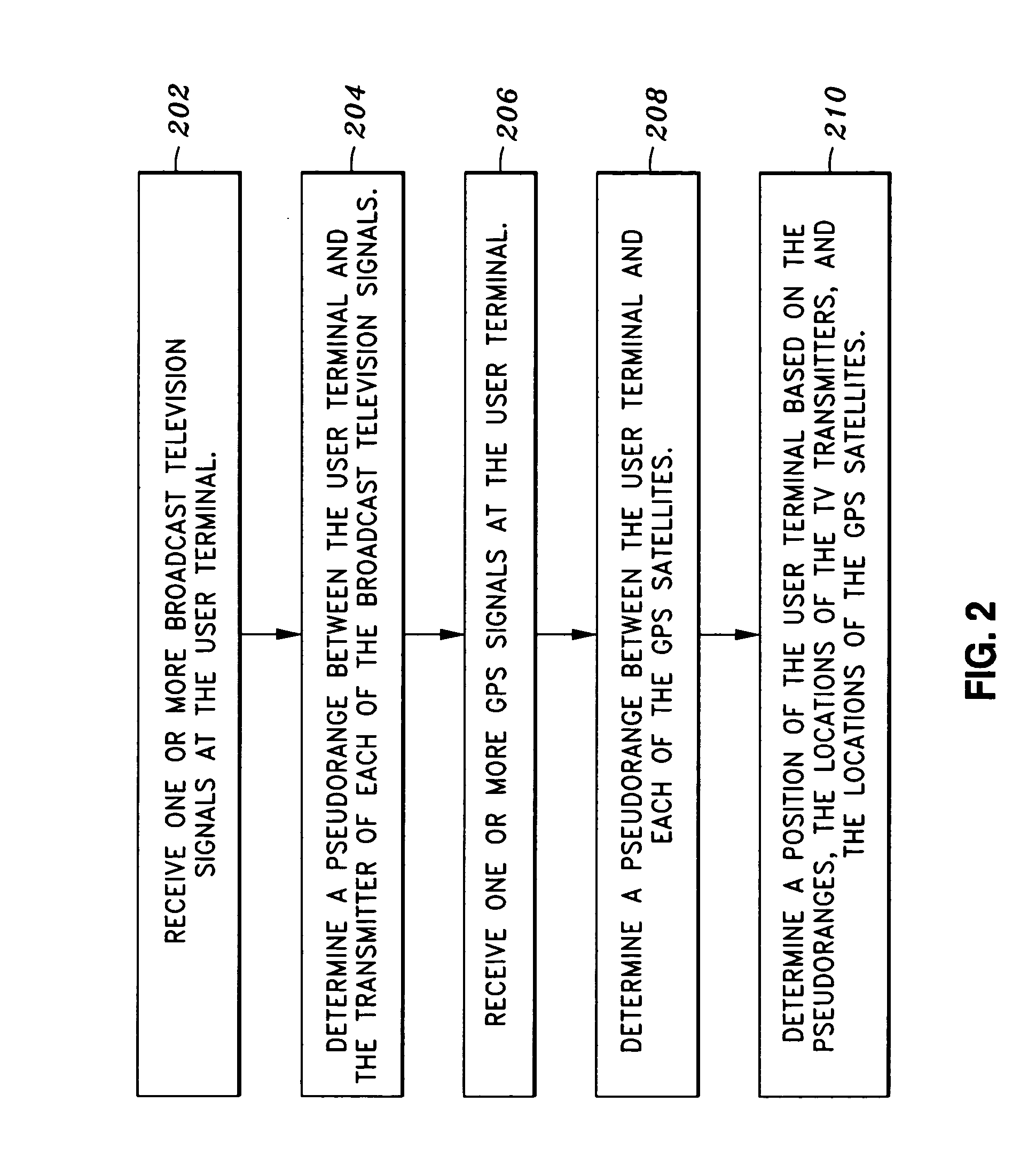Pilot acquisition and local clock calibration with reduced MIPS
a pilot acquisition and local clock technology, applied in the field of position location, can solve the problems of inability to achieve the level of positioning accuracy or reliability of the disclosed location technology, limited gps effect, and marginally useful signals
- Summary
- Abstract
- Description
- Claims
- Application Information
AI Technical Summary
Problems solved by technology
Method used
Image
Examples
Embodiment Construction
[0055] In general, in one aspect, the invention features a method and apparatus for receiving TV and GPS signals and determining position location in a manner that provides for rapid signal synchronization while minimizing receiver computational requirements. The invention also features a method and apparatus for coherent accumulation of intermediate frequency (IF) signals, which in turn permits real time or near real-time operation using a software implementation of the receiver. The invention further discloses a method for rapid open-loop acquisition of the pilot frequency of the received radio signal. The receiver described herein can be a receiver used either solely for receiving terrestrial or television broadcast signals, for receiving both television and GPS signals, or for receiving different types of television broadcast signals for position determination purposes. In certain embodiments, the receiver described herein is implemented in software on a microprocessor or genera...
PUM
 Login to View More
Login to View More Abstract
Description
Claims
Application Information
 Login to View More
Login to View More - R&D
- Intellectual Property
- Life Sciences
- Materials
- Tech Scout
- Unparalleled Data Quality
- Higher Quality Content
- 60% Fewer Hallucinations
Browse by: Latest US Patents, China's latest patents, Technical Efficacy Thesaurus, Application Domain, Technology Topic, Popular Technical Reports.
© 2025 PatSnap. All rights reserved.Legal|Privacy policy|Modern Slavery Act Transparency Statement|Sitemap|About US| Contact US: help@patsnap.com



